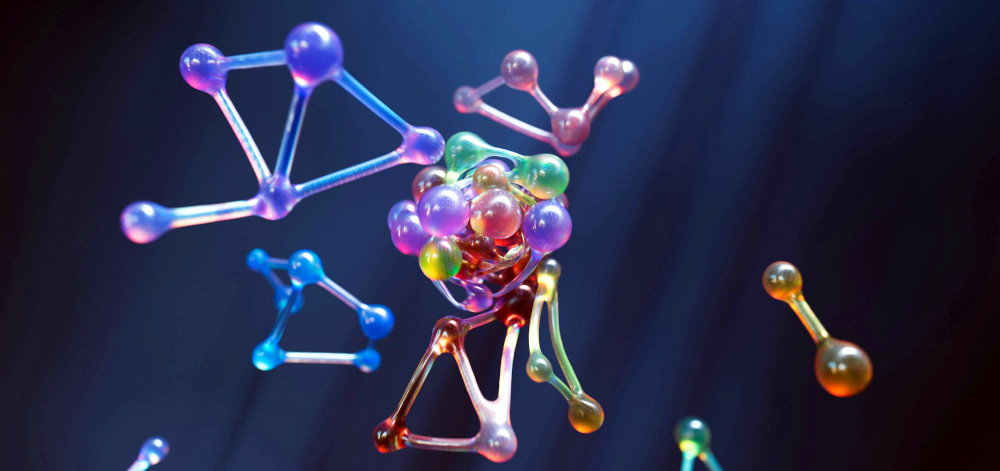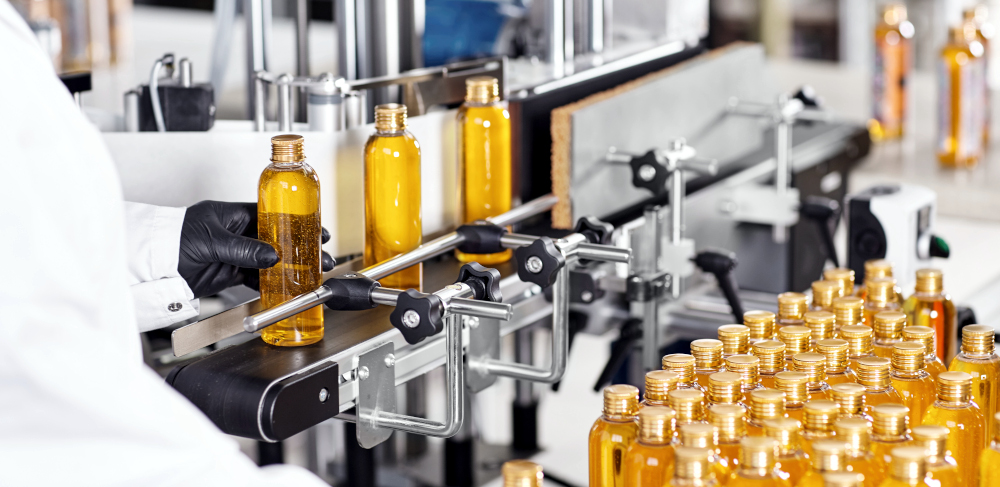A breath of fresh air for PET recycling
 Image credit: Google
DeepMind
Image credit: Google
DeepMind
Northwestern University chemists recently developed
a non-toxic, resource-efficient, solvent-free method for breaking down plastic
waste — by harnessing moisture from air.
The simple, new process uses an inexpensive catalyst to break apart the bonds in
polyethylene terephthalate (PET) — the most common plastic in the
polyester family — then, the broken pieces are merely exposed to ambient air.
The trace amounts of moisture in air convert the broken-down PET into monomers —
the crucial building blocks for plastics. From there, the researchers envision
the monomers could be recycled into new PET products or other, more valuable
materials.
Safer, cleaner, cheaper and more sustainable than current plastic-recycling
methods,
the new technique —
published in
the journal, Green Chemistry — greatly increases the viability of a
circular economy for
plastics.
“The US is the number-one plastic polluter per capita, and we only recycle 5
percent of those plastics,” said Northwestern’s Yosi
Kratish, a research
assistant professor of chemistry at Northwestern’s Weinberg College of Arts and
Sciences and the study’s co-corresponding
author. “There is a dire need for better technologies that can process different
types of plastic waste. Most of the technologies that we have today melt down
plastic bottles and downcycle them into lower-quality products. What’s
particularly exciting about our research is that we harnessed moisture from air
to break down the plastics, achieving an exceptionally clean and selective
process. By recovering the monomers, which are the basic building blocks of PET,
we can recycle or even upcycle them into more valuable materials.”
“Our study offers a sustainable and efficient solution to one of the world’s
most pressing environmental challenges: plastic waste,” said Naveen
Malik, the study’s first
author. “Unlike traditional recycling methods, which often produce harmful
byproducts like waste salts and require significant energy or chemical inputs,
our approach uses a solvent-free process that relies on trace moisture from
ambient air. This makes it not only environmentally friendly but also highly
practical for real-world applications.”
Malik co-led the study with Kratish and Tobin J.
Marks, the Charles E. and
Emma H. Morrison Professor of Chemistry at Weinberg and a professor of
materials science and engineering at Northwestern’s McCormick School of
Engineering. At the time of the
research, Malik was an postdoctoral fellow in Marks’
laboratory; now, he is a
research assistant professor at India’s SRM Institute of Science and
Technology.
Pain points in plastic recycling
Commonly used in food packaging and beverage bottles, PET plastics represent 12
percent of total plastics used globally. Because it does not break down easily,
PET is a major contributor to plastic
pollution.
After use, it either ends up in landfills or, over time, degrades into
microplastics
or nanoplastics — which often end up in waterways.
Finding new ways to recycle
plastic
is a hot topic in research. But current methods to break down plastics require
problematic conditions — including extremely high temperatures and solvents,
which require copious amounts of energy and generate toxic byproducts. The
catalysts used in these reactions (ex: platinum and palladium) are also often
expensive or toxic, creating even more harmful waste. Post-process, researchers
must then separate the recycled materials from the solvents — another
time-consuming and energy-intensive process.
In previous work, Marks’ group at Northwestern became the first to develop
catalytic processes that don’t require solvents. In the new study, the team
again devised a solvent-free process.
“Using solvents has many disadvantages,” Kratish said. “They can be expensive,
and you have to heat them up to high temperatures. Then, after the reaction, you
are left with a soup of materials that you have to sort to recover the monomers.
Instead of using solvents, we used water vapor from air. It’s a much more
elegant way to tackle plastic recycling issues.”
An ‘elegant’ solution
To conduct the new study, the researchers used a
molybdenum catalyst and
activated carbon — both of which are inexpensive, abundant, non-toxic
materials. To initiate the process, the researchers added PET — plastics made of
large molecules with repeating units, which are linked together with chemical
bonds — to the catalyst and activated carbon and heated up the mixture, and the
chemical bonds within the plastic quickly broke apart.
Next, the researchers exposed the material to air. With the tiny bit of moisture
from air, the material turned into terephthalic acid (TPA) — the highly
valuable precursor to polyesters. The only byproduct was
acetaldehyde — a valuable,
easy-to-remove industrial chemical.
“Air contains a significant amount of moisture, making it a readily available
and sustainable resource for chemical reactions,” Malik said. “On average, even
in relatively dry conditions, the atmosphere holds about 10,000 to15,000 cubic
kilometers of water. Leveraging air moisture allows us to eliminate bulk
solvents, reduce energy input and avoid the use of aggressive chemicals — making
the process cleaner and more environmentally friendly.”
“When we added extra water, it stopped working — it’s a fine balance,” Kratish
said. “But it turns out, the amount of water in air was just the right amount.”
Solving multiple industry challenges
The resulting process is fast and effective. In just four hours, 94 percent of
the possible TPA was recovered. The catalyst is also durable and recyclable,
meaning it can be used time and time again without losing effectiveness. And the
method works with mixed plastics, selectively recycling only polyesters. With
its selective nature, the process bypasses the need to sort the plastics before
applying the catalyst — a major economic advantage for the recycling industry.
When the team tested the process on real-world materials including plastic
bottles, shirts and mixed plastic waste, it proved just as effective. It even
broke colored plastics down into pure, colorless TPA.
Next, the researchers plan to increase the scale of the process for industrial
use. By optimizing the process for large-scale applications, the researchers aim
to ensure it can handle vast quantities of plastic waste.
“Our technology has the potential to significantly reduce plastic pollution,
lower the environmental footprint of plastics and contribute to a circular
economy — where materials are reused rather than discarded,” Malik said. “It’s a
tangible step toward a cleaner future, and it demonstrates how innovative
chemistry can address global challenges in a way that aligns with nature.”
Designing lower-impact HDPE with machine learning
 Image credit:
WayHomeStudio
Image credit:
WayHomeStudio
Meanwhile, chemists at Cornell University have found ways
to reduce the environmental impact of another ubiquitous polymer: high-density
polyethylene (HDPE). One of the world’s most common plastics, about 100
million metric tons of HDPE are produced annually — using more than 15 times the
annual energy needed to power New York City and adding enormous amounts of
plastic waste to landfills and oceans.
The Cornell researchers developed a machine-learning
model
that enables manufacturers to customize and improve HDPE materials — found in
milk jugs, shampoo bottles, playground equipment and countless other things — by
decreasing the amount of material needed for various applications. It can also
be used to boost the quality of recycled HDPE to rival new, making recycling a
more practical process.
“Implementation of this approach will facilitate the design of next-generation
commodity materials and enable more efficient polymer recycling, lowering the
overall impact of HDPE on the environment,” said Robert DiStasio
Jr., associate
professor of chemistry and chemical biology in the College of Arts and
Sciences (A&S).
“Designing Polymers with Molecular Weight Distribution-Based Machine
Learning,”
published March 14 in the Journal of the American Chemical Society, is a
collaboration between DiStasio and polymer experts Geoffrey
Coates — the
Tisch University Professor in the Department of Chemistry and Chemical
Biology (A&S) — and Brett
Fors, the Frank and
Robert Laughlin Professor of Physical Chemistry (A&S). Doctoral student
Jenny Hu is first author; postdoctoral researcher Zachary Sparrow,
former postdoctoral researcher Brian Ernst and doctoral student Spencer
Mattes contributed.
HDPE requires so much energy because it’s made on a huge scale, said Fors —
whose lab focuses on sustainable polymers. There are also challenges to
recycling it.
“It’s more expensive to recycle polyethylene than it is to make virgin plastic,”
he said. “Another problem is when you mechanically recycle it, you start
breaking polymer chains — which causes the properties to degrade.”
HDPE materials lose quality every time they are recycled, Coates added. “You
can’t just take these plastics and melt them down. It’s not like aluminum that’s
perfect every time. You have to work hard to valorize it and make the plastics
useful,” adding that recyclers have about five cents to spend on valorizing —
boosting the quality — for each pound of recycled plastic.
Currently, recycling facilities improve the quality of recycled output by adding
a small amount of virgin plastic. However, the mix of recycled material varies
day by day — varying the amount of new plastic needed. The key to using less
material (and energy) manufacturing polyethylene — while controlling the quality
and physical properties of recycled material — lies in understanding how the
various lengths of polymer chains in a sample, called its molecular weight
distribution, influences its properties. The key factors: how viscous it is
during manufacturing, and its strength and toughness as a finished product.
PEPPr
DiStasio and his team trained their machine-learning model, called PEPPr
(PolyEthylene Property PRedictor) using a library of more than 150
polyethylene samples synthesized and characterized by Coates, Fors and members
of their labs.
“We needed a library of polymers with different molecular weight distributions,”
DiStasio said. “We also wanted to have polymers with a diverse set of both
processability and mechanical properties.”
Machine-learning power is necessary for the complex task of understanding the
relationship between the composition of these materials and their properties,
the researchers say.
DiStasio said PEPPr solves two problems. If the molecular weight distribution of
an HDPE sample is known, the model can predict its properties: melt viscosity,
toughness and strength. It can also be used for the inverse; if a user has a set
of targeted properties in mind, the model can tell them what polymer sample
would have those properties.
“If you want to make a plastic bag, you will need different properties in the
melt than if you want to make a kayak,” Fors said.
The PEPPr approach is a first step toward smarter, more tailored polymer design
and more effective and sustainable recycling processes, the researchers said.
They plan to expand the scope of properties that can be predicted and add
processing methods, which can be quite influential, to the model. They also hope
to expand the model to include other polymer classes.
“We should be able to develop these types of models for any type of commercial
polymer,” Fors said. “It should be a general way to tune properties and recycle
other materials, as well.”
This research was supported by the National Science Foundation (NSF) Center for
Sustainable Polymers and the Cornell Center for
Materials Research, with funding from the NSF’s
Research Experience for Undergraduates
program.
Get the latest insights, trends, and innovations to help position yourself at the forefront of sustainable business leadership—delivered straight to your inbox.
Sustainable Brands Staff
Published Mar 20, 2025 8am EDT / 5am PDT / 12pm GMT / 1pm CET